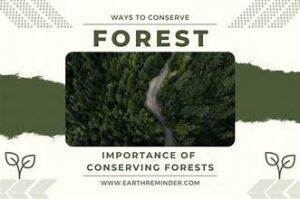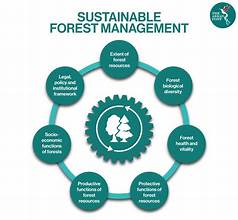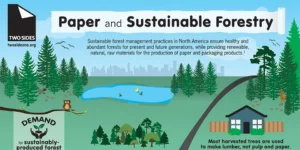
In recent years, participatory forestry has emerged as a pivotal approach in conservation, transforming traditional methods and offering innovative solutions to environmental challenges. This article explores how participatory forestry is shaping the future of conservation, examining current trends and innovations that are driving this transformation.
What is Participatory Forestry?
Participatory forestry involves the active involvement of local communities, stakeholders, and indigenous peoples in forest management and conservation activities. Unlike top-down approaches where decisions are made by external authorities, participatory forestry empowers those directly impacted by forestry policies to have a say in the management and preservation of their local forests.
Trends in Participatory Forestry
1. Community-Led Forest Management
One of the most significant trends in participatory forestry is the shift towards community-led forest management. Communities are increasingly taking charge of managing their local forests, leveraging traditional knowledge and practices to enhance conservation efforts. This approach not only improves forest health but also strengthens community resilience and socio-economic development.
2. Integration of Indigenous Knowledge
Indigenous knowledge and practices are gaining recognition for their crucial role in sustainable forest management. Participatory forestry integrates this knowledge, acknowledging the deep connection indigenous peoples have with their lands. This integration helps in crafting management strategies that are culturally relevant and environmentally effective.
3. Use of Technology in Monitoring and Management
The advent of technology has revolutionized participatory forestry. Tools such as Geographic Information Systems (GIS), remote sensing, and mobile applications are being utilized to monitor forest health, track illegal activities, and manage resources more efficiently. These technologies enable communities to engage in real-time data collection and decision-making processes.
4. Policy and Institutional Support
Governments and international organizations are increasingly recognizing the value of participatory forestry. Policies and frameworks are being developed to support community-based management, ensuring that participatory approaches are integrated into national and global conservation strategies. This support is crucial for scaling up successful models and achieving broader conservation goals.
Innovations in Participatory Forestry
1. Co-Management Models
Co-management models represent a significant innovation in participatory forestry. These models involve shared responsibility between government agencies and local communities, creating a collaborative approach to forest management. Co-management has been shown to improve conservation outcomes by combining technical expertise with local knowledge.
2. Community Forest Enterprises
Community forest enterprises are emerging as a sustainable way to leverage forest resources while ensuring conservation. These enterprises involve communities in the production and marketing of forest products, such as timber, non-timber forest products, and eco-tourism services. The revenue generated supports both conservation efforts and community development.
3. Participatory Mapping
Participatory mapping is an innovative tool that allows communities to map their traditional lands and resources. This process helps in identifying areas of ecological importance, monitoring land use changes, and planning conservation strategies. Participatory mapping also enhances community engagement by validating and documenting indigenous knowledge.
4. Forest Carbon Projects
Forest carbon projects are gaining traction as a means of addressing climate change through participatory forestry. These projects involve communities in carbon offset initiatives, where forests are managed to sequester carbon dioxide. In return, communities receive financial incentives, creating a win-win situation for both conservation and local livelihoods.
Benefits of Participatory Forestry
1. Enhanced Conservation Outcomes
Participatory forestry leads to more effective conservation outcomes by leveraging local knowledge and fostering a sense of ownership among communities. This approach helps in addressing local conservation challenges more effectively and ensures that management strategies are suited to the specific needs of the forest.
2. Empowered Communities
By involving communities in decision-making processes, participatory forestry empowers local people and strengthens their capacity to manage natural resources sustainably. This empowerment leads to improved governance, increased community cohesion, and enhanced socio-economic opportunities.
3. Increased Resilience
Participatory forestry enhances the resilience of both forests and communities. By integrating traditional knowledge and innovative practices, communities are better equipped to adapt to environmental changes and challenges, such as climate change and deforestation.
Challenges and Future Directions
While participatory forestry offers numerous benefits, it also faces challenges. These include securing adequate funding, ensuring equitable participation, and addressing conflicts of interest among stakeholders. To overcome these challenges, continued investment in capacity building, stakeholder engagement, and policy development is essential.
Looking ahead, the future of participatory forestry will likely see further integration of technology, expansion of co-management models, and increased collaboration between communities and institutions. As participatory forestry evolves, it holds the promise of creating more sustainable and inclusive conservation practices that benefit both people and the environment.
Conclusion
Participatory forestry is reshaping the future of conservation by fostering collaboration, integrating indigenous knowledge, and leveraging innovative technologies. As trends and innovations continue to evolve, participatory forestry stands as a testament to the power of inclusive and community-driven approaches in achieving sustainable conservation outcomes.
By embracing participatory forestry, we can ensure that conservation efforts are more effective, equitable, and resilient, paving the way for a healthier and more sustainable future for our forests and communities.


